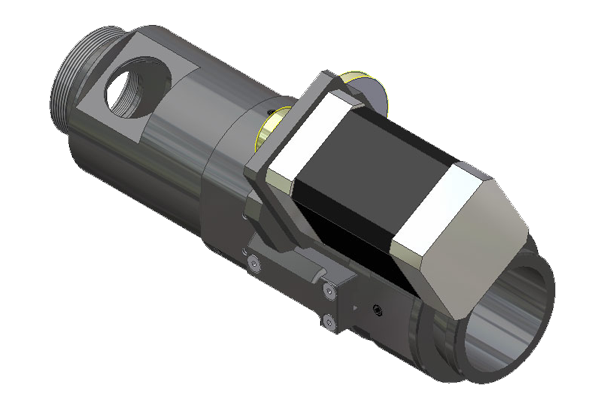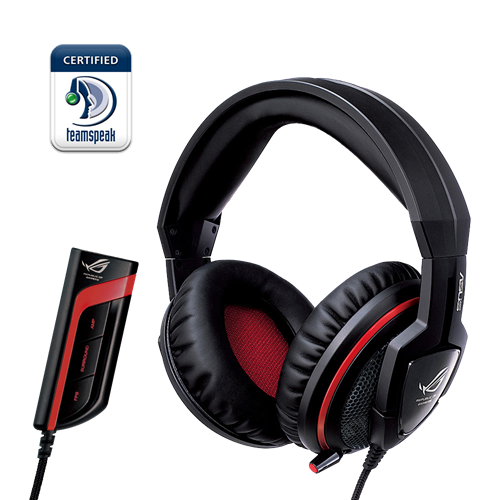Description
This driver decodes the solution and field messages of Optimal Ranging's underwater utility surveying product Orion. The driver does not have the capability to command the device. Please use the vendor's tooling to configure the device prior to using it in Qinsy.
Driver Information
| Driver | Orion | Interface Type | Serial | Driver Class Type | Terminated |
|---|---|---|---|---|---|
| UTC Driver | No | Input / Output | Input | Executable | drvQpsTerminated.exe |
| Related Systems |
| ||||
| Related Pages | |||||
Database Setup
General
ORION DELTA ORION Users Manual For Current Models. This is the complete User Manual for the Orion Delta 3D Printer that came with the firmware version 0.91. To verify this, simply look at the LCD screen when it powers on and it will display the machines firmware information. ORION Users Manual For machines with 0.83 Firmware. Not all HOS apps are equal—some are expensive, don’t work, or have small buttons that frustrate drivers. Orion’s HOS app is simple, inexpensive and compliant—that’s all you need. Worried about safety? If you’ve had a safety issue with a driver or are worried about safety, risk or what your drivers have to do on the road, you need Orion. One thing that I noticed is if the incorrect resolution is set, the display will not work, it just stays blank. It was an issue for me in the early days of Windows 10. I had to manually set it to the correct value. These days though, I just connect my monitor and wait a bit. Windows 10 installs the driver all by itself and my monitor becomes. Verify that files were installed in C: Program Files (x86) Solarwinds Orion APM OracleClient. Check the file properties of each.dll file to ensure that the account under which the SolarWinds JobEngine v2 service runs has high enough privileges to load required libraries. Restart all Orion services.
The Orion system does not provide a time stamp with the messages. Therefore, the time of arrival is used as the time stamp for the decoded observation.
Because the Orion has a fixed delay between the actual observation and the time at which the message arrives in Qinsy, a fixed latency should be entered for each system that uses the Orion driver.
The latency can be entered in the first page of the 'Edit system' dialog. The latency that should be used is 1.386 seconds.
Pitch Roll Heave Sensor
Use 'Optimal Ranging Orion (R-P)' as driver. The default settings (apart from the port settings and the latency) are correct.
Gyro Compass
Use 'Optimal Ranging Orion' as driver. The default settings (apart from the port settings and the latency) are correct.
This driver will provide the magnetic heading of the Orion.
Multibeam Echosounder
Use 'Optimal Ranging Orion' as driver.
Set the proper latency and port settings and set the 'Max beams per ping' field to '2'. Other than that the default values are correct.
USBL system
The USBL system provides the position of utility detection relative to the Orion. The USBL system can be used to display a projection of the utility in the Navigation display and/or the Profile display.
To create such a setup:
- Make sure that you have configured an Orion object with at least a gyro system.
- Make sure that a Miscellaneous system is added to the system that at least decodes slot 'INV_YAW'
- Create a new object that represents the utility.
- Type: Vessel.
- Use a proper shape that mimics the shape of the utility.
- Add a gyro system to the 'utility' object.
- Use 'System Cloner' for the driver.
- Choose the gyro system on the Orion object as the system to clone.
- Choose the inverted yaw observation of the miscellaneous system (see step 2) as the offset.
- Position the utility object by adding a USBL system to the Orion object:
- Use 'Optimal Ranging Orion' as driver & set the appropriate port settings
- Use the CoG of the Orion as the transducer position
- Use the CoG of the utility object as the USBL target
- Use 'Optimal Ranging Orion' as driver & set the appropriate port settings
Miscellaneous System
Use 'Optimal Ranging Orion' as driver and provide the proper port settings.
All slot ID's as described in the system chapter are available.
Systems
The following systems are decoded by the driver:
Pitch, Roll & Heave
Pitch and roll are decoded from the solution message. There is no heave in the message.
Gyro Compass

Magnetic heading is decoded from the solution message.
Multibeam Echosounder
A multibeam system is decoded from the solution message. This multibeam system consists of two 'beams'. Beam one indicates 'top of utility', beam two 'top of seabed'.
X,Y and Z coordinates of the footprints are calculated from the solution message in the following way:
| Beam | X | Y | Z |
|---|---|---|---|
| 1 | -1.0 * offset * cos(cable yaw) | offset * sin(cable yaw) | depth from reference point |
| 2 | Altimeter |
USBL
A USBL system is decoded from the solution message. This USBL system gives the position of the detected point in the utility relative to the Orion.
X, Y and Z coordinates are calculated in the same way as beam 1 of the multibeamer system.
Miscellaneous system
All fields that are not decoded by one of the aforementioned systems, are available as a miscellaneous observation:
| Value | Slot ID |
|---|---|
| Solution ($IISOL) message | |
| Solution status | SOLSTAT |
| Solution frequency | FREQ |
| AC magnetic field | MAGFIELD |
| Offset from reference point | OFFSET |
| Offset confidence | OFF_CONF |
| Depth confidence | DEP_CONF |
| Current | CURRENT |
| Current confidence | CUR_CONF |
| Current phase | CUR_PHASE |
| Yaw of cable from E-Pod | CABLEYAW |
| Inverted yaw of cable from E-Pod | INV_YAW |
| DC magnetic gradient along sensor pair #1 axis | MGRAD1 |
| DC magnetic gradient along sensor pair #2 axis | MGRAD2 |
| DC magnetic gradient along sensor pair #3 axis | MGRAD3 |
| Pressure | PRESSURE |
| Magnetic heading | HEADING |
| Field ($IIFLD) message | |
| Sensor pair | SNSRPAIR |
| Frequency | FLD_FREQ |
| AC field for sensor 1X, real part | ACFLD1XR |
| AC field for sensor 1X, imaginary part | ACFLD1XI |
| AC field for sensor 1Y, real part | ACFLD1YR |
| AC field for sensor 1Y, imaginary part | ACFLD1YI |
| AC field for sensor 1Z, real part | ACFLD1ZR |
| AC field for sensor 1Z, imaginary part | ACFLD1ZI |
| AC field for sensor 2X, real part | ACFLD2XR |
| AC field for sensor 2X, imaginary part | ACFLD2XI |
| AC field for sensor 2Y, real part | ACFLD2YR |
| AC field for sensor 2Y, imaginary part | ACFLD2YI |
| AC field for sensor 2Z, real part | ACFLD2ZR |
| AC field for sensor 2Z, imaginary part | ACFLD2ZI |
| DC field for sensor 1, real part | DCFLD1R |
| DC field for sensor 1, imaginary part | DCFLD1I |
| DC field for sensor 2, real part | DCFLD2R |
| DC field for sensor 2, imaginary part | DCFLD2I |
All software and utilities available for download through this page are provided by third party software vendors pursuant to license agreements or other arrangements between such vendors and the end user. Lilliput UK disclaims any responsibility for or liability related to the software. Any questions complaints or claims related to the software should be directed to the appropriate Author or Company responsible for developing the software.

There are inherent dangers in the use of any software available for download on the Internet, and Lilliput UK cautions you to make sure that you completely understand the potential risks before downloading any of the software. You are solely responsible for adequate protection and backup of the data and equipment used in connection with any of the software, and LilliputUK will not be liable for any damages that you may suffer in connection with using, modifying or distributing any of the software.
Displaylink Software and Drivers - Suitable for USB type monitors
Models supported - UM70/72, UM80/82, UM1010/1012, UM900
| OS: Windows 10*, Windows 8.1* (32 & 64 bit), Windows 8* (32 & 64 bit), Windows 7* (32 & 64 bit) Click the link to go to DisplayLink's Windows driver download page | Link |
| OS: Windows Vista* (32 & 64 bit) Click the link to go to DisplayLink's Windows driver download page | Link |
| OS: Windows XP* (32bit) Click the link to go to DisplayLink's Windows driver download page | Link |
| Mac OS: Mountain Lion 10.8, Lion 10.7, Snow Leopard 10.6 Click the link to go to DisplayLink's MacOS driver download page | Link |
| Linux users: Outbound link Click the link to go to DisplayLink's Ubuntu driver download page | Link |
Orion Monitor Driver
Touchkit Drivers - For all touchscreen model screens
Models supported - UM70/72, UM80/82, UM1010/1012, UM900, 669GL-70NP/C/T, 869GL-80NP/C/T, FA1011-NP/C/T
| Windows 7/Windows 8/Windows 8.1: eGalax's TouchKit Windows download page | Link |
| Windows Vista/XP/2000: eGalax's TouchKit Windows download page | Link |
| Windows 9x/Me: eGalax's TouchKit Windows download page | Link |
| Windows NT 4.0: eGalax's TouchKit Windows download page | Link |
| Mac OS 9X: eGalax's TouchKit MacOS download page | Link |
| Mac OS X: eGalax's TouchKit MacOS download page | Link |
| Mac OS X (Intel) up to 10.6: eGalax's TouchKit MacOS download page | Link |
| Mac OS X (Intel 64-Bit) up to 10.6: eGalax's TouchKit MacOS download page | Link |
| Mac OS X: eGalax's TouchKit MacOS download page | Link |
| Mac OS X (Intel) 10.7 and above: eGalax's TouchKit MacOS download page | Link |
| Mac OS X (Intel 64-Bit) 10.7 and above: eGalax's TouchKit MacOS download page | Link |
| Linux users: eGalax's TouchKit Ubuntu download page | Link |
Still having problems??
Orion Monitor Drivers
Please drop us a message using our Contact Us page, and tell us your problem. We aim to reply to your message within 1-2 working days. Alternatively phone us on our number shown above
